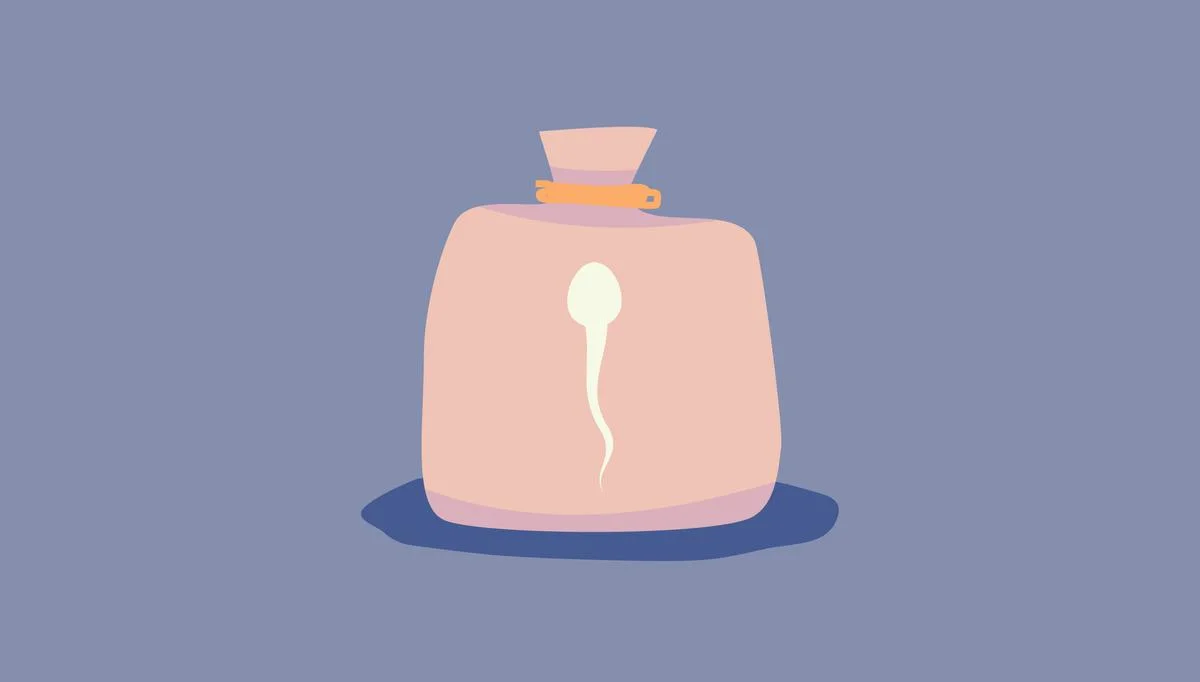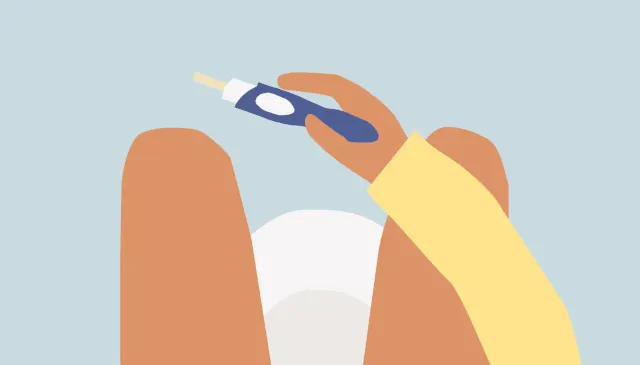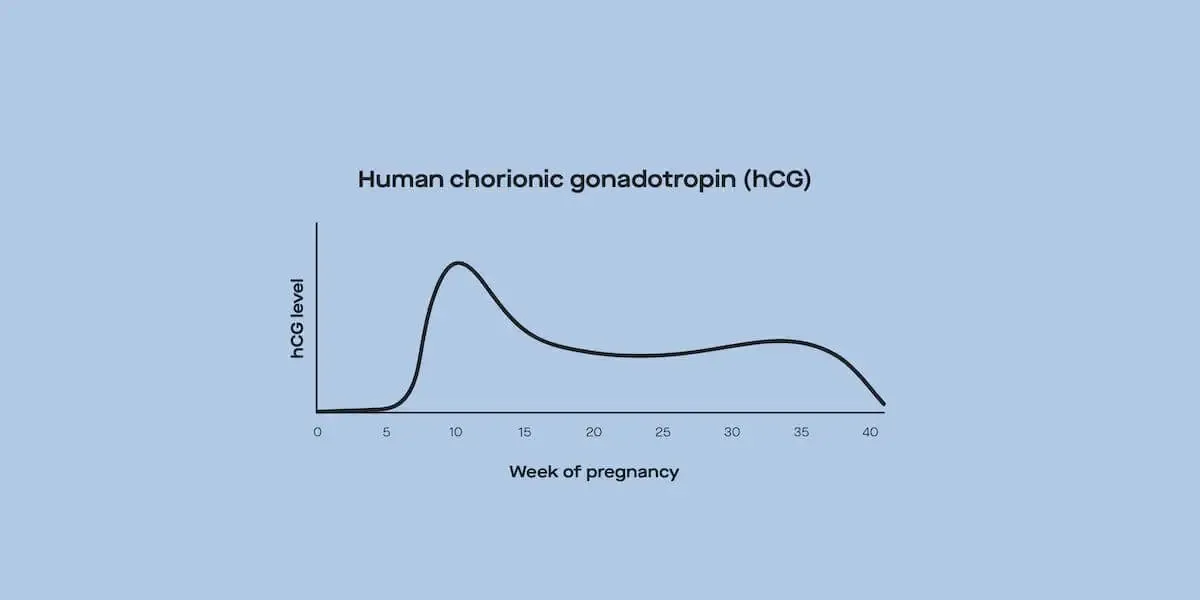Here's what we'll cover
Here's what we'll cover
If you’re experiencing uncomfortable and irregular periods, you’re not alone. Polycystic ovary syndrome (PCOS) is a common condition affecting women’s reproductive health. PCOS affects up to 15% of women, although it’s difficult to know for sure how many people experience this condition since it’s often underdiagnosed (Leon, 2021).
What is polycystic ovary syndrome?
PCOS is the most common endocrine (hormonal) condition that affects women between puberty and menopause (Leon, 2021). The exact cause of PCOS is unknown. It’s believed to be affected by multiple factors like genetics, inflammation, insulin resistance, and obesity.
For your healthcare provider to diagnose PCOS, two of the following three criteria must be present (Leon, 2021):
Chronic anovulation (greater than 35 days between ovulating)
High levels of androgens (sometimes called male hormones and usually only present in small amounts in women)
Ovarian cysts (fluid-filled sacs in or around the ovaries)
The symptoms of polycystic ovary syndrome may appear as early as a person's first period or could develop later in life. Typically, symptoms are noticeable in the late teens to early 20s. The hormonal imbalances in PCOS lead to a wide range of possible symptoms.
8 common PCOS symptoms
PCOS can cause a wide range of symptoms. Here are the eight most common issues you might encounter.
1. Irregular periods
PCOS affects your ovulation and reproductive hormones, often leading to irregular periods. Chronic anovulation means that there is a minimum of 35 days between ovulation. So, frequently missed menstrual periods are one of the most common signs of PCOS (Leon, 2021).
2. Heavy bleeding and severe cramps
Research suggests that PCOS is a common cause of abnormal uterine bleeding. Increased time between periods likely plays a role in the heavy periods, clots, and severe period pain some women experience (Hapangama, 2016).
Also, the cysts that may form in ovaries may cause pelvic pain.
3. Weight gain
The hormone imbalances found in PCOS make it significantly easier to gain weight. With PCOS, people are more likely to gain weight around the abdomen. It’s believed the challenges with maintaining a healthy weight are also related to insulin resistance commonly found with PCOS (Rocha, 2019).
4. Excessive hair growth
Many people with PCOS experience unwanted body hair. This condition is called hirsutism, marked by excess hair growth on unexpected body areas, including the face, chest, back, stomach, or buttocks. The hair tends to be thick, coarse-textured, and dark in color (Leon, 2021).
5. Loss of scalp hair
Some women will experience hair loss, similar to male pattern baldness. The thinning hair can occur on the top, front, around, or in multiple spots on the head (Leon, 2021).
It may appear as a receding hairline or thin areas of hair.
6. Acne
Research suggests that adolescents with severe acne that resists treatment are 40% more likely to develop PCOS. The imbalance in hormones, such as excess androgen levels, likely increases the severity of acne (Leon, 2021).
7. Ovarian cysts
Despite its name, not all women with polycystic ovary syndrome will have ovarian cysts. Still, many women will have multiple fluid-filled sacs or follicles. The cysts are located on or inside one or both of the ovaries.
8. Fertility problems
PCOS is often underdiagnosed, and many women are unaware they have PCOS until they try to conceive. The changes in hormones and inconsistent ovulation may cause infertility and make it more difficult to conceive.
It’s still possible to conceive and have a healthy pregnancy with PCOS. It will likely just take longer than someone without PCOS and may require help from a fertility specialist. Lifestyle changes and medications can help to increase fertility.
Women with PCOS are more likely to have high-risk pregnancies and experience (Leon, 2021):
Preterm delivery
Miscarriage
Gestational diabetes
High blood pressure
Complications of PCOS
Other health problems are associated with PCOS, especially when PCOS is undiagnosed and uncontrolled. The hormonal changes and insulin resistance put you at higher risk of developing other conditions, such as (Leon, 2021):
Metabolic syndrome: This is a group of conditions (high blood pressure, excess fat around the abdomen, insulin resistance, and high cholesterol) that increase your risk of heart disease, heart attack, and stroke.
Type 2 diabetes: Insulin resistance and frequently elevated insulin levels increase your risk for developing type 2 diabetes (uncontrolled blood sugar levels).
Obstructive sleep apnea (OSA): OSA is a condition where your breathing stops or pauses while you sleep. Metabolic conditions and obesity increase your likelihood of developing sleep apnea.
Heart disease: Obesity and PCOS are linked to an increased risk for heart disease and stroke.
Endometrial cancer: Cancer of the uterine lining is more common in women with PCOS.
PCOS treatment
If you’re living with PCOS, rest assured there are medical and lifestyle treatment options available to help manage your symptoms. Typically, lifestyle changes are considered the first step to treating PCOS.
Depending on when you are diagnosed and what symptoms you present with, your healthcare provider may recommend medication to help balance hormones and insulin levels.
Diet and lifestyle changes
Nutrition and exercise play an important role in helping to manage PCOS. There isn’t a specific PCOS weight loss diet, but often it’s recommended to limit simple carbs and sugar intake.
Insulin is the hormone that helps bring blood sugar (glucose) in from the blood. A high-carb diet requires more insulin to help maintain stable blood sugar and could be problematic for people with insulin resistance. Diet tips for PCOS include (Moran, 2013):
Eat foods high in fiber (like vegetables, whole grains, legumes, etc.).
Consume healthy fats (like olive oil, fatty fish, avocados, nuts, etc.).
Eat plenty of protein to help maintain muscle (such as fatty fish, lean red meat, chicken, eggs, etc.).
Eat carbs with fat and protein to help slow down the absorption of sugar and prevent blood sugar spikes.
Exercise and physical activity also help with PCOS symptoms because they may help support weight loss and insulin sensitivity (Woodward, 2020).
Medication
Some medications can target your hormone levels or help manage other symptoms. Here are some of the common drugs used for PCOS (Leon, 2021):
Hormonal birth control: These could take the form of birth control pills, patches, or other devices. Progesterone-based hormonal medications are shown to help reduce the risk for endometrial cancer, regulate menstrual cycles, and improve PCOS symptoms.
Metformin: This is a diabetes medication that helps improve insulin sensitivity and lower insulin levels.
Clomiphene: This is a common medication used to help improve fertility and ovulation in women with PCOS.
Spironolactone: This medication may help to lower androgen production, potentially reducing hair growth and acne.
It can be challenging to talk with your healthcare provider about your reproductive health. Still, if you notice PCOS symptoms, it’s important to speak with your healthcare provider. They can help you manage your symptoms and feel better. There isn’t a cure for PCOS, but you can manage your symptoms with diet and lifestyle changes, along with medications as needed.
DISCLAIMER
If you have any medical questions or concerns, please talk to your healthcare provider. The articles on Health Guide are underpinned by peer-reviewed research and information drawn from medical societies and governmental agencies. However, they are not a substitute for professional medical advice, diagnosis, or treatment.
Hapangama, D. K. & Bulmer, J. N. (2016). Pathophysiology of heavy menstrual bleeding. Women's Health (London, England), 12(1), 3–13. doi:10.2217/whe.15.81. Retrieved from https://pubmed.ncbi.nlm.nih.gov/26695831/
Leon, L. I. R., Anastasopoulou, C., Mayrin, J. V. (2021). Polycystic ovarian disease. [Updated Jul 21, 2021]. In: StatPearls [Internet]. Retrieved from https://www.ncbi.nlm.nih.gov/books/NBK459251/
Maslyanskaya, S., Talib, H. J., Northridge, J. L., Jacobs, A. M., Coble, C., & Coupey, S. M. (2017). Polycystic ovary syndrome: an under-recognized cause of abnormal uterine bleeding in adolescents admitted to a children's hospital. Journal of Pediatric And Adolescent Gynecology , 30 (3), 349–355. doi: 10.1016/j.jpag.2016.11.009. Retrieved from https://pubmed.ncbi.nlm.nih.gov/27903446/
Moran, L. J., Ko, H., Misso, M., Marsh, K., Noakes, M., Talbot, M., et al. (2013). Dietary composition in the treatment of polycystic ovary syndrome: a systematic review to inform evidence-based guidelines. Journal of the Academy of Nutrition and Dietetics , 113 (4), 520–545. doi: 10.1016/j.jand.2012.11.018. Retrieved from https://pubmed.ncbi.nlm.nih.gov/23420000/
Rocha, A. L., Oliveira, F. R., Azevedo, R. C., Silva, V. A., Peres, T. M., Candido, A. L., et al. (2019). Recent advances in the understanding and management of polycystic ovary syndrome. F1000Research , 8 , F1000 Faculty Rev-565. doi: 10.12688/f1000research.15318.1. Retrieved from https://www.ncbi.nlm.nih.gov/pmc/articles/PMC6489978/
Woodward, A., Klonizakis, M., & Broom, D. (2020). Exercise and polycystic ovary syndrome. Advances in Experimental Medicine and Biology , 1228 , 123–136. doi: 10.1007/978-981-15-1792-1_8. Retrieved from https://pubmed.ncbi.nlm.nih.gov/32342454/










